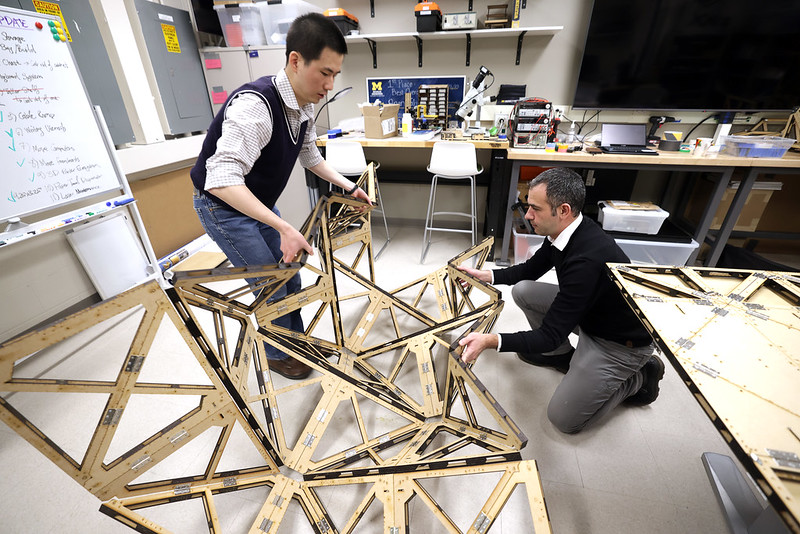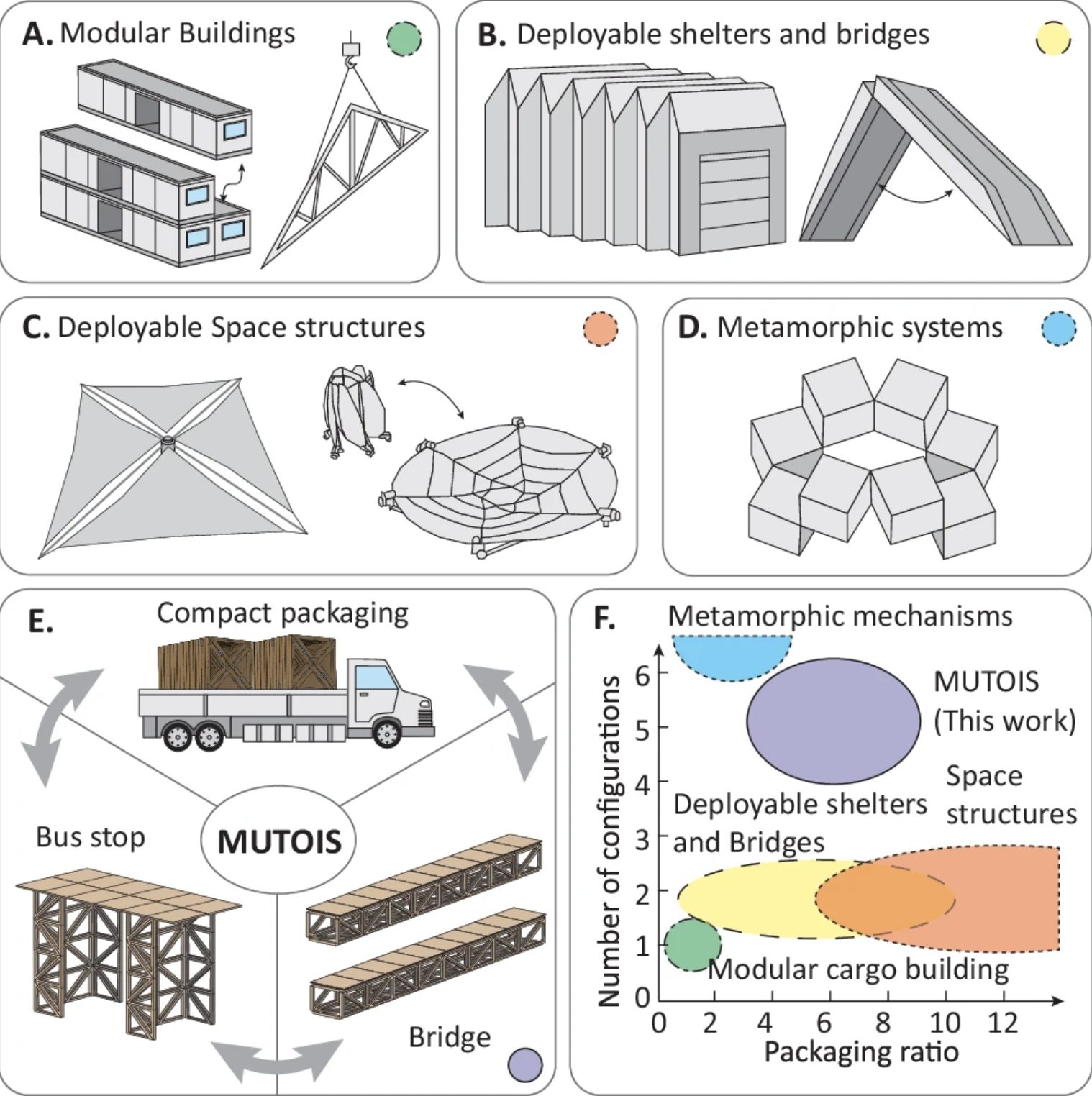
Researchers from the University of Michigan have found a way to better use the principles of origami to design structures that are relatively easy to transport, deploy and reconfigure.
The idea of using origami-like modules to build load-bearing structures is not new, but previous research has failed to appreciate the importance of consistent thickness in making the technology work.
Evgueni Filipov, an associate professor of civil and environmental engineering, said: “That uniformity of the component’s thickness is what’s key and what’s missing from many current origami systems. When you have that, together with appropriate locking devices, the weight placed upon a structure can be evenly transferred throughout.”

Origami could be used to erect bridges, shelters, stages for live events – and could also be used to build in outer space. So far, the team has created a 1.6ft-wide cubic prototype. This can be unfolded to form a 13ft-long bridge, a 6.5ft-tall bus stop or a 13ft-tall column.
“With its adaptability and load-carrying capability, our system can build structures that can be used in modern construction,” Filipov said.
Further work will focus on more complicated designs and connections between pieces.
The full paper by the University of Michigan, titled Large-scale Modular and Uniformly Thick Origami-Inspired Adaptable and Load-carrying Structures is available from the website of science journal Nature.
The study was supported by funding from the National Science Foundation and the Automotive Research Centre.






